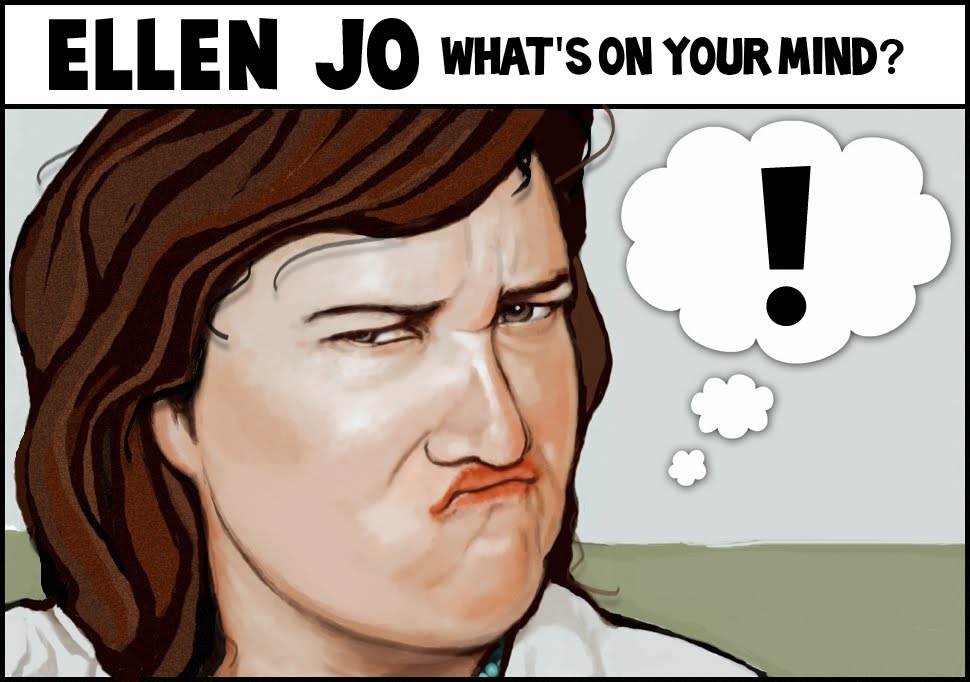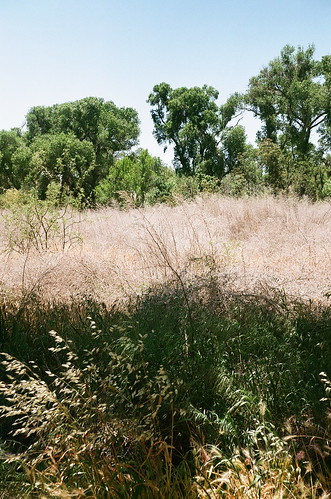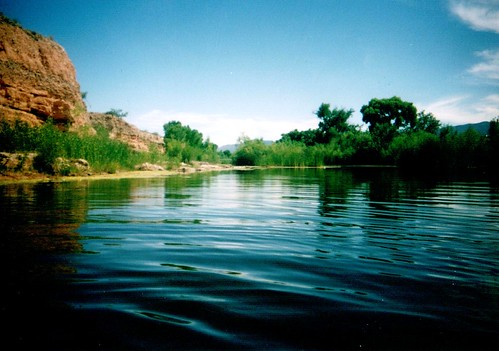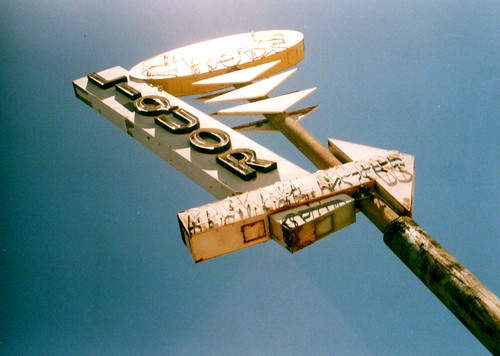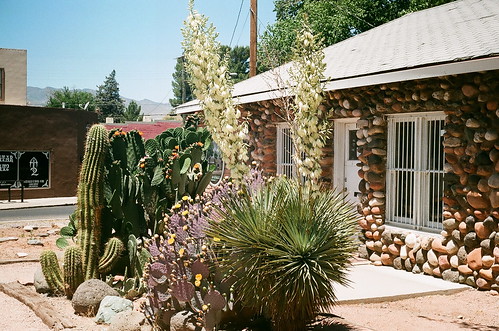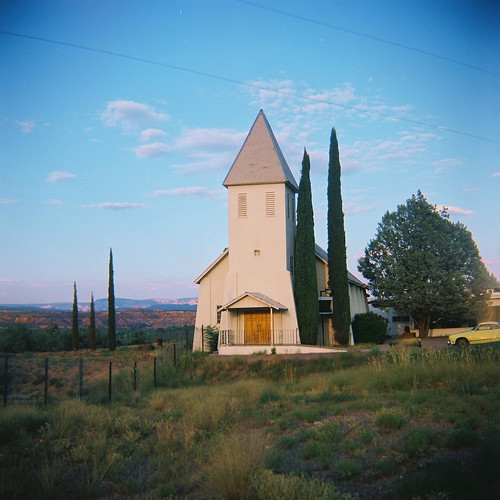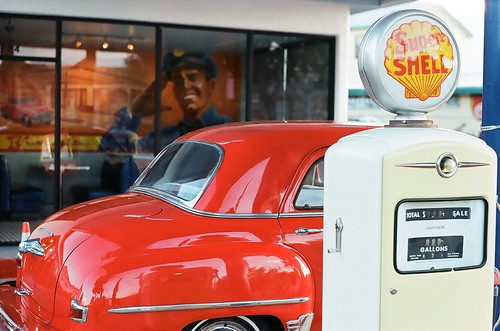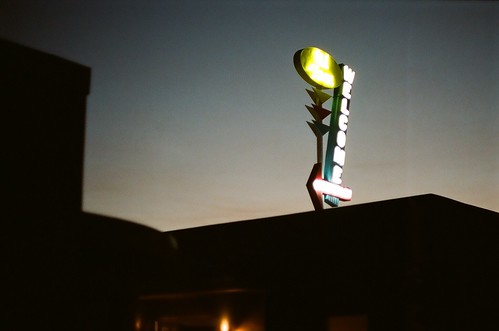The Outs
Ellen Jo Roberts
December 2010
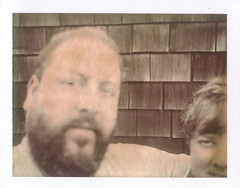
Beards are for hippies, beatniks, bikers, artists, academics, forest rangers, Santa Claus and the Amish.
They’ve been worn by presidents, paupers, hipsters, truck drivers and those practicing an orthodox religion.
A beard signifies masculinity, widsom, fearlessness, prestige, poverty, filthiness.
It keeps faces warm on ski slopes and on hockey rinks. It’s a handy place to stash snacks and smokes for later. A friend informed me a beard even comes in handy for Arizona problems like removing tiny prickly pear cactus thorns from your hand.
“All the great gods had beards,” said Cottonwood artist Rex Peters who has worn a beard since age 18.
“I’ve only shaved it off 3 or 4 times, but not in the past 10 years.”
“Why did you shave it off?” I asked. “To see what I looked like,” came the simple reply,
“In the mid-‘90s it was very long. I shaved it off one day, and walked into the Spirit Room where I’d been working a long time. I walked in and no one recognized me. Until I laughed.”
Peters first began his bearded lifestyle when he was young in order to look more mature,
“So I could buy beer.”

Many religions espouse facial hair, including Sikhism, Hinduism, Judaism, Islam and Christianity. Jesus is always depicted with a beard. The Rastafari grow long dreadlocks and beards as part of their beliefs, following the Bible’s Leviticus verse 21:5 "They shall not make baldness upon their head, neither shall they shave off the corner of their beard, nor make any cuttings in the flesh." In various times Catholicism has both allowed and prohibited facial hair. Hasidic Jews consider the beard to channel holy energy from heaven. Eastern Orthodox priests are identified by their facial hair. In ancient India the beard was valued as a commodity, and punishment for crimes could include its removal. In modern Amish and Hutterite cultures, young men remain smooth-faced until marriage, after which they cultivate beards they keep for the rest of their lives.
Beards were the dominant style for most world cultures up until the 1700s. In the United States their popularity bounced back in the mid-1800s as an emblem of courage, and leadership skills. Abraham Lincoln was the first bearded American president, and nearly every president to follow into the 20th century wore facial hair. Since William Howard Taft, however, all presidents have been beardless. Not even a well-groomed set of Mutton Chops! 20th century advertising and the advent of the disposable razor made a clean cut smooth-faced look the accepted norm. Politicians and industry leaders wore their hair short, and the faces shorn. Beards were usually limited to professors, the aged and certain Eastern Orthodox priests up until counterculture movements began in late ‘50s. Long hair on the head and face represented a new disdain for earlier social norms. Musicals like “Hair” sang praises to the long, fleecy, greasy, shiny, flaxen and waxen.
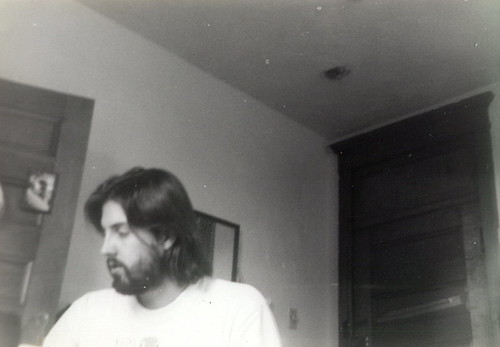
When I first met my husband in college, he was a handsome clean-shaven lad of 21. Soon after and for most of our married life he’s been a furry-faced freak. It’s part of his identity, this big thick beard.
“When I was younger and more attractive,” he said, “and I was mountain biking with long hair and bare legs, growing a beard was a way to ward off unwelcome advances from the same sex.” Mistaken for a long-haired shapely-legged girl, his only defense was to grow a beard to indicate his manliness.

Every once in a while I wish he’d shave it off. I beg, plead, cajole. I argue that if I were a boy and could grow a beard I’d certainly mix it up now and then, for variety’s sake. A Fu Manchu one season , Chops the next. A big 1970s porn ‘stache. A goatee is always a classic. A dark smoky 5 O’Clock Shadow. Get creative.
“Why are you so attached to that beard?” I asked with escalating frustration.
He stroked his Billy Goat’s gruff a moment and replied, thoughtfully, “Because it’s attached to me.”
“How can I argue with that logic?” I laughed.
About 10 years ago he did shave it for me, as a birthday present. Seeing his fresh face, which had been long hidden, affected me in naughty ways. “Hubba hubba, it’s like I got a whole new husband!” I squealed. After about a year or so he let it grow back. Razors are expensive, and shaving daily is a commitment.
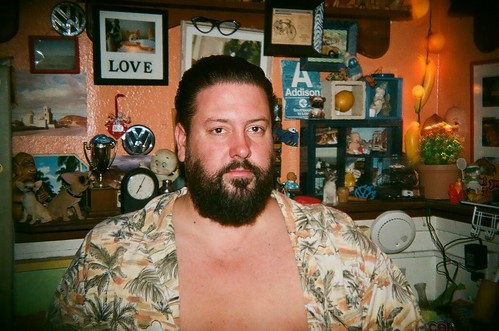
“The single most manly, and great thing a man can do. To have a beard is to be a true man. If you have a beard, show it off proudly, and enjoy the satisfaction of the envy in the eyes of people around you who don't have beards”.- urbandictionary.com
"The hair of the chin showed him to be a man" -St Clement of Alexandria
Do chicks dig dudes with beards?
I cannot vouch for other parts of the country, but in the crunchy wilds of Arizona, the survey says yes, with women responding to the inherent masculinity of facial hair. Many explain they don’t want their man to be better manicured than themselves.
Janyel Pitman, lovely mango-scented vintage-VW-driving hippie chick of the Flagstaff KOA, feels strongly about this issue. “I love beards! Hairy, burly, long gnarly mountain man beards. In fact I am usually only attracted to a man if he has one. There is something so comforting about them like a flannel shirt. When I see one, to me it says ‘I am a MAN. I'm too busy doing things outdoors, in the woods, on a bike, in my bus, on a tractor, to bother with something like shaving’. I love to tangle my fingers in them, and pull on ‘em, and see a toothy smile from under them. I love them!”
Artful tonsorial design can appeal to all who are attracted to men. The bristly “Bear” archetype is very a very popular subset of gay male, recognized by their burly build and hirsuite face. A beard can also provide a disguise from true identity. Another definition of the word refers to an opposite sex friend who frequently accompanies a homosexual, disguising their sexual preference under the guise of a heterosexual partnership. In more repressed times, beards disguised many a Hollywood leading man.
Conversely, modern day movie stars are rarely seen with facial hair, unless they are a). on hiatus, b). playing lead in a stranded-on-a-desert-island film, or c). Joaquin Phoenix staging an elaborate publicity hoax.
The World Beard and Moustache Championships, the premier event in the “international sport of bearding”, brings the owners of the world’s most elaborate facial hair together every two years to be judged by a panel of distinguished experts. The best of the best are chosen in a variety of categories ranging from the most delicate of moustaches to the elaborate anything-goes freestyle full beard.
The roots of this contest trace back to a celebration held the small German village of Höfen-Enz in the early 1990s. Competitors at the inaugural event represented several beard clubs concentrated in the Black Forest. Having invented the events and defined the categories, Germany long dominated the sport. In 2009, however, when the competition took place in Alaska, an upstart squad of Americans established the USA as the new facial hair world superpower!
The next world championship will take place in Trondheim, Norway in 2011, sponsored by the Norwegian Moustache Club. Start growing your masterpiece now.
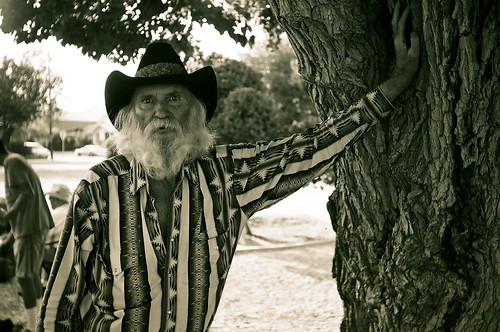
While I am a fan of fuzzy faces, many are not. Some men just don’t look good in a beard, or have trouble growing them evenly. Mormonism decries facial hair. Many native tribes of North America are not predisposed to heavy beard growth. In our post 9-11 world, a beard in the airport rouses suspicion and earns you a second glance from the T.S.A. Many women prefer a clean look. A beard hides a lot of face. They can scratch and tickle. They catch food particles, milkshake, and snot from blown noses. They can look messy, wiry, and overgrown. Psycho killers often have crazy eyes and crazier beards.
“Barba” is the Spanish word for beard, and the Latin root for words like barbaric, and barbarian.
Jerome artist David Wilder generally sports a vintage western style on his winking smiling face,
“My chin whiskers are a compromise between hating to shave,” which he calls a “barbaric practice’ (pun intended I’m sure), “and not wanting to look too much look like an axe murderer. But that's just me.”
For more information:
http://www.worldbeardchampionships.com/
Ellen Jo Roberts lives in Clarkdale Arizona with a bunch of hairy creatures.
Read all about it at ellenjo.com
